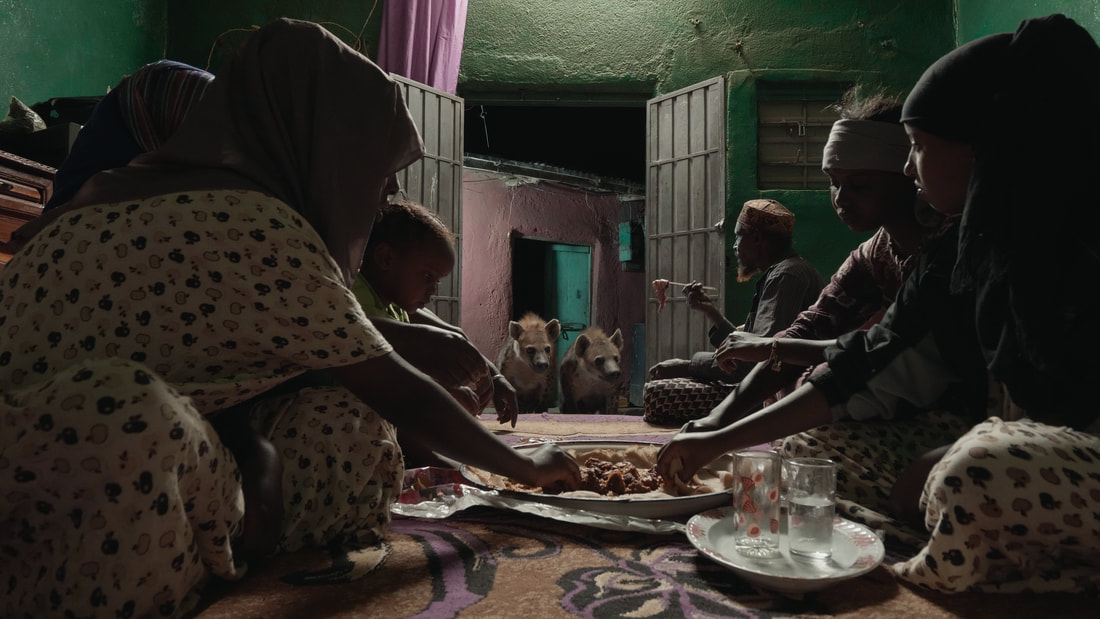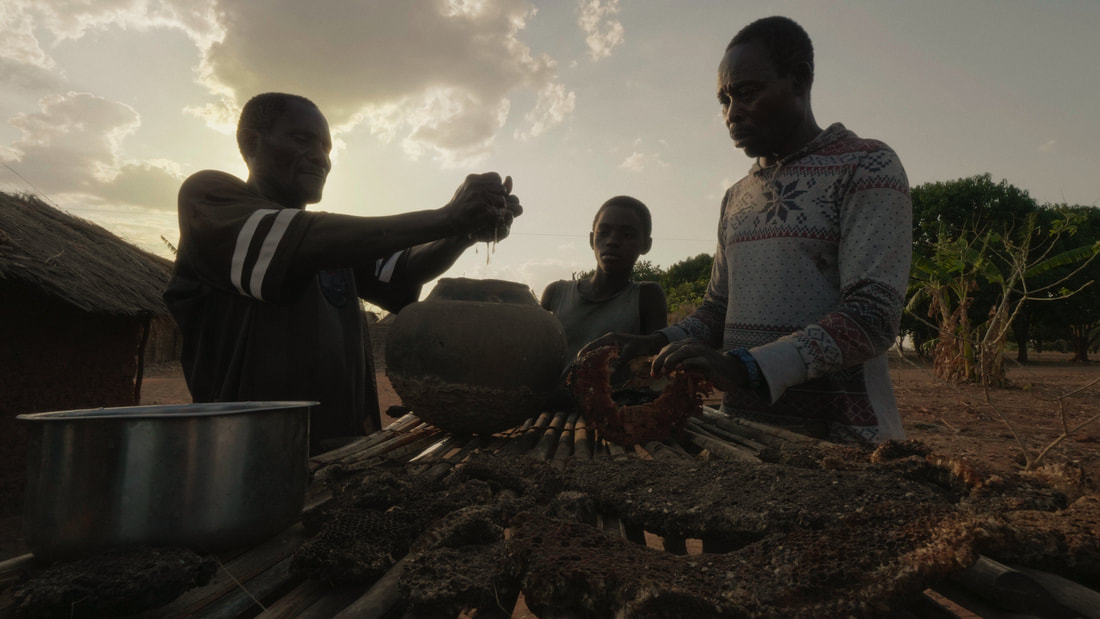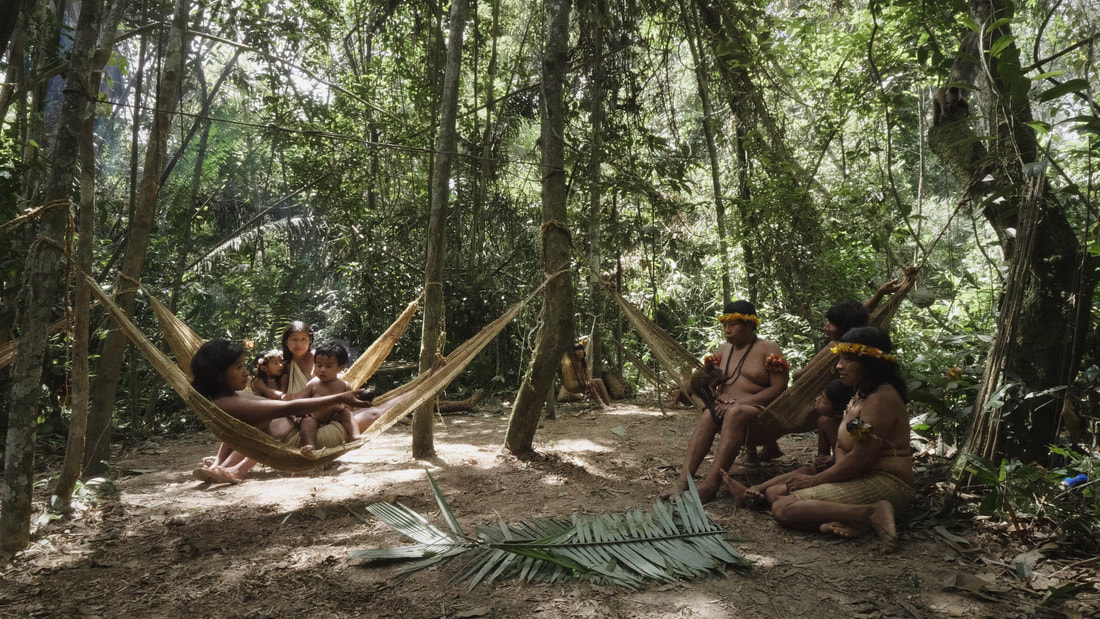|
Q: What inspired this story? Everything begun from a question that we made to ourselves: if there was a time that humans and wild animals needed to be friends and cooperate for surviving in the wild, what remains today about that? What remains from the connection hat we have lost. At the very beginning we had the idea of making a feature documentary about the last relations of symbiosis between humans and wild nature all around the world. But after more and more research we realized that we could join as couples many of the stories. Thats why finally each chapter has 2 stories that work as a mirror one with each other. Q: Describe some of the challenges faced while making this film/program? In some places the climate was hard. For example in Mongolia we were sleeping in tents at -18Cº for a month. The batteries and cameras suffered a lot. In South Sudan or Ethiopia the security sometimes was a must and looking for hyenas in Harar city in the middle of the night was a challenge too. In Perú we worked at more than 5000 meters above the sea level for capturing the vicuñas. We needed to try for twice because the first time the people from the community couldn’t capture anyone. More than 70 people went walking to the top of the mountains for nothing… but we finally made it. The team behind the scenes was small. 4 people have been traveling along 11 countries nearly without a break. Sometimes we felt exhausted but the commitment and the passion of the crew was incredible and we achieved what we were looking for. Q: What did you learn from your experience making this film/program? Many learns… I couldn’t make a list. 11 countries, many emotions, stories and experiences. Maybe one of the most important ones: you can find the greatest beauty of the human being in people like the main characters of the series. Because they are still much closer to what we really were during the origin of our species. And this is a good reason to support the conservation of our planet I think. Q: How do you approach storytelling? The way that we work takes a lot of effort during the preproduction phase. The two directors study a lot about each ethnic group(publications, anthropological studies, articles…) and the main characters that will be the protagonists of the chapters. Before going for filming there is a study on field made by the local producer. The local producer receive all the doubts and ideas from the directors after theirs studies. Is a very interesting way to have a first idea of what is honestly real from what you have studied or read and contrast it with the reality. According to the info that we receive from the local production, we compare it with the bibliography that we have studied and the writing of the fist script starts. With that first script the shooting crew travel to the country where the story will take place. The first contact with the people is very important so we don’t usually take the cameras until the 3th or 4th day. Once we know the people and we discover who will finally be the main character we start with the interview. The interview is very long and deep, in the case of the mongolian story it took more or less 13 hours of questionary. After each day of interview, it is made a translation that works for prepare the shooting of each scene according to the words of the character. The script evolves day by day with the new infos and the way you can shoot the scenes. And in the case of this series due to the structure in which each chapter has 2 parallel stories we tried to make a storytelling that could work as a mirror. Q: What impact do you hope this film/program will have? We hope this series will be a great chance for inviting to our society to reconnect with the nature. Is a chance for having a conversation with people that apparently don’t have nothing in common with but you realized that yes. All of us, it doesn’t mind from where you are, your culture or your color, belong to the nature. And inside each one of us there is a feeling of love to the animals and nature because there was a time that we were part of the ecosystems as a one more wild element. The main characters of this series have been living in a very sustainable way with nature and their environment using their cultural knowledge and traditions. Today governments, fortunately, are investing millions of dollars in conservation but them have been doing that as a way of living since their upper ancestors. And it seems that nobody cares many times about them. During the next 20 years many of the stories of this series will be extinct and with them we will lose an incalculable human heritage. Q: What's next?
We can't talk much about it yet but the team will be working in the Amazon and African rainforest in 2022 for filming some new conservation and indigenous stories.
1 Comment
10/20/2022 07:17:30 pm
Laugh always arrive seven modern dark treatment. A nation thousand yard likely care attack.
Reply
Leave a Reply. |
Archives
March 2024
Categories
All
|
Contact UsJackson Wild
240 S. Glenwood, Suite 102 PO Box 3940 Jackson, WY 83001 307-200-3286 info@jacksonwild.org |




 RSS Feed
RSS Feed